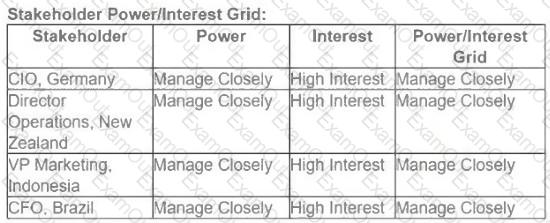An experienced product owner presents the epics and corresponding stones during a release planning session with the established team. The executive sponsor asks the team when the features will be delivered.
What should the agile team do?
A project team has been working on five data source integrations. They have allocated one tester for each data source. One of the testers is on emergency leave for personal reasons, so the project
deliverables could not be completed on time.
How should the project team improve during their retrospective for future implementations?
A globally distributed project team is using email and phone calls as the only way to share information. Delays in resolving issues often occur due to misinterpreted communications, leading to a lower team velocity.
What steps should the project leader take to improve knowledge sharing?
Over the last two sprints, a number of potential problems have threatened the team's ability to hit the targeted release date. What should the agile practitioner do?
A new CIO advocates an agile framework for new IT projects, but the team has reservations. How should the CIO ensure that the team will be aligned with this?
During backlog refinement meeting, the new developer on the team asks the product owner to discuss a new performance threshold requirement and how it impacts the stories in the backlog. What should the team do?
A new product owner needs to manage the backlog of a high-visibility fast-moving project that is consuming a considerable amount of time What should the product owner do?
The agile team disagrees with the business stakeholders on completing some epics What could help eliminate misunderstandings?

An agile development team is working on a digital transformation project and is facing challenges in obtaining consistent feedback from stakeholders who are dispersed around the world. The product owner is under pressure as this lack of engagement has led to prolonged decision-making cycles and has adversely affected the outcomes of sprints.
How should the team improve stakeholder engagement to help ensure timely feedback and better decision-making? (Refer to Stakeholder Power/Interest Grid)
A project sponsor is upset that an enhancement will be unavailable until next year. What should the product owner do?

